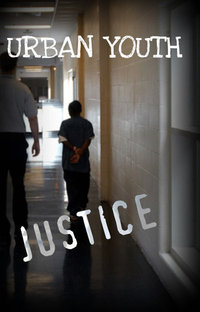The American Pipe Dream: Winning the Future Without Youth of Color

By Ernest Saadiq Morris, Urban Youth Justice
“Cutting the deficit by gutting our investments in […] education is like lightening an overloaded airplane by removing its engine. It may make you feel like you’re flying high at first, but it won’t take long before you feel the impact.” – President Obama, State of the Union Address, January 25, 2011
In his January 2011 State of the Union speech, President Obama introduced “Winning the Future” as a slogan to underline the urgency and importance of continued investment in public education to ensure the future of American success and competitiveness domestically and abroad. Nevertheless, the Obama Department of Education’s Race to the Top funding competition champions corporate-driven education reform that rewards standardized testing performance and private charter school expansion, while failing to equally prioritize the guarantee of equal educational opportunity. As schools focus on meeting statistical goals, educational disparities often remain unaddressed or actually worsen due to school practices – such as the disproportionate use of zero tolerance discipline and special education placements, as well as inferior curriculum tracking – that contribute to unequal educational opportunity. These disparities threaten to undermine the future participation of a generation of students of color in the American dream.
Indeed, recent evidence shows that zero tolerance school discipline and criminal justice referrals continue to disproportionately affect Black, Latino and other disadvantaged youth, i.e., students with special needs/disabilities, LGBT and English Language Learner students.
A March 2011 report co-authored by the Florida NAACP, Florida ACLU and the Advancement Project, Still Haven’t Shut Off the School-to-Prison Pipeline, indicated that Florida school districts are referring too many students to the criminal justice system for school misbehavior – even after state law was changed to eliminate zero tolerance and give school officials discretion for handling certain offenses, such as fighting, trespassing, disorderly conduct and theft of less than $300.
"The law sought to draw a distinction between petty acts of misconduct and misdemeanors and serious threats to school safety, said Howard Simon, executive director of the Florida ACLU. What we’ve found instead is that some districts are continuing to refer cases to law enforcement that may be better handled at the school level."
Similarly, a January 2011 report exposed a crisis of systematic school pushout of Philadelphia’s Black and Latino students through widespread and discriminatory use of zero tolerance discipline. At the same time, New York City continues to blatantly disenfranchise Black and Latino youth of equal educational opportunity in multiple ways, including: disproportionate denial of admission of Black and Latino youth to elite, specialized public schools based on a single standardized test score, ; disproportionate closures of public schools that serve the most disadvantaged Black and Latino youth with special needs, and the disproportionate zero tolerance discipline of Black and Latino youth.
Meanwhile, Alabama Republican Party leader Hugh McInnish recently sent a letter defending the disparities in education and discipline between Caucasian and Black students in the Huntsville, Alabama school district, highlighted in recent findings of the U.S. Justice Department, declaring:
“If there is unfairness, it is because life itself is unfair. The unfairness is not manmade.”
This stunning attempted justification of unequal educational opportunity shows a callous disregard for the life potential and value of Black youth and other disadvantaged youth that is reflected in education policies nationwide. Color-blind and disability-free education reform urges the general public’s acceptance of survival of the fittest education policy methods as simply enforcing higher standards of accountability. Even the extended economic recession is exploited as a convenient justification for educational disparities, since the grouping of youth into educational haves and have-nots supposedly assists with the effective investment of limited public education funding. It is no coincidence that the corporate education reform model stigmatizes youth of color from politically and economically disadvantaged communities as it simultaneously disenfranchises them of their right to equal educational opportunity. This perpetuates the school-to-prison pipeline and cycle of exploitation of youth of color that increases their risk of mass incarceration and lifelong economic oppression, including chronic un/underemployment and intergenerational poverty.
Failing to effectively educate youth of color risks a future majority population that is alienated from society. Projected population demographics indicate that, by 2023 youth of color will make up the majority of children under 18, with Latino minors comprising the largest segment of that population. And the overall white population will reach minority status possibly as early as 2039, but no later than 2050 based on the most conservative estimates.
A potential critical mass of economically dispossessed persons with underdeveloped critical thinking and a lack of advanced trade skills will surely throw this nation into crisis. The impending drain on social services budgets alone would significantly burden state and federal governments and it is doubtful that an aging minority white population would be able to sufficiently pick up the economic slack to maintain a robust economy. This is not a winning formula for a brighter future.
Blind support of a business-modeled reform agenda that prioritizes value-added evaluation of standardized testing performance without addressing institutional learning and discipline disparities will only continue the devaluation of students of color and the disenfranchisement of their right to equal educational opportunity. Education reform that emphasizes an individualized learning process that prepares each student with critical thinking, problem solving, and trade skills is the best possible stimulus investment of public dollars. If we are serious about winning the future, then we must ensure that education reform methods are accountable to the right of equal educational opportunity for all. Educating the most vulnerable of our youth is a smart investment in the future majority population and the long-term vitality of our nation.
Ernest Saadiq Morris is a youth rights advocate, civil rights and liberties lawyer, and founding director of the public education and advocacy initiative, Urban Youth Justice. You can follow Urban Youth Justice daily on Facebook and Twitter.
